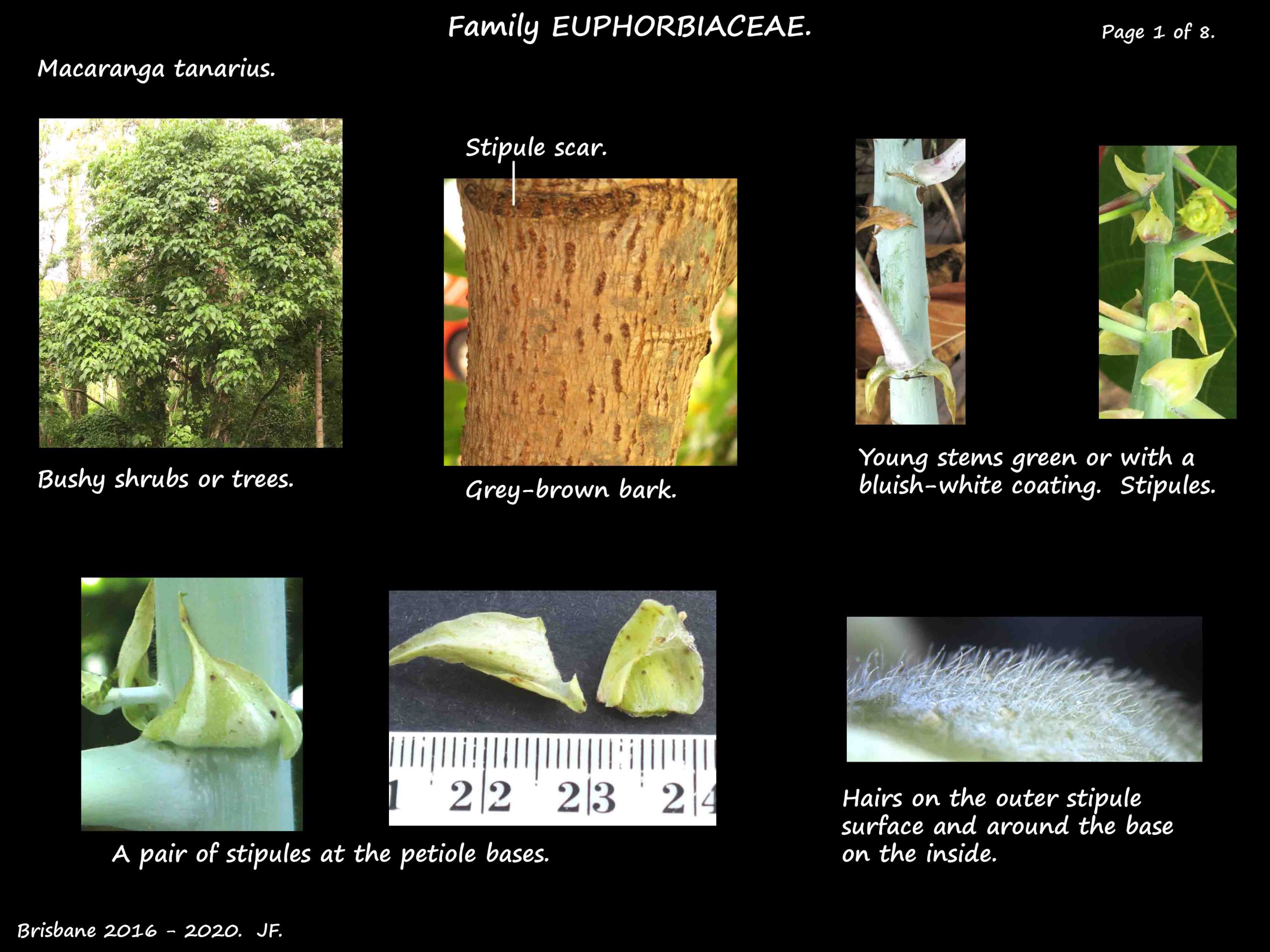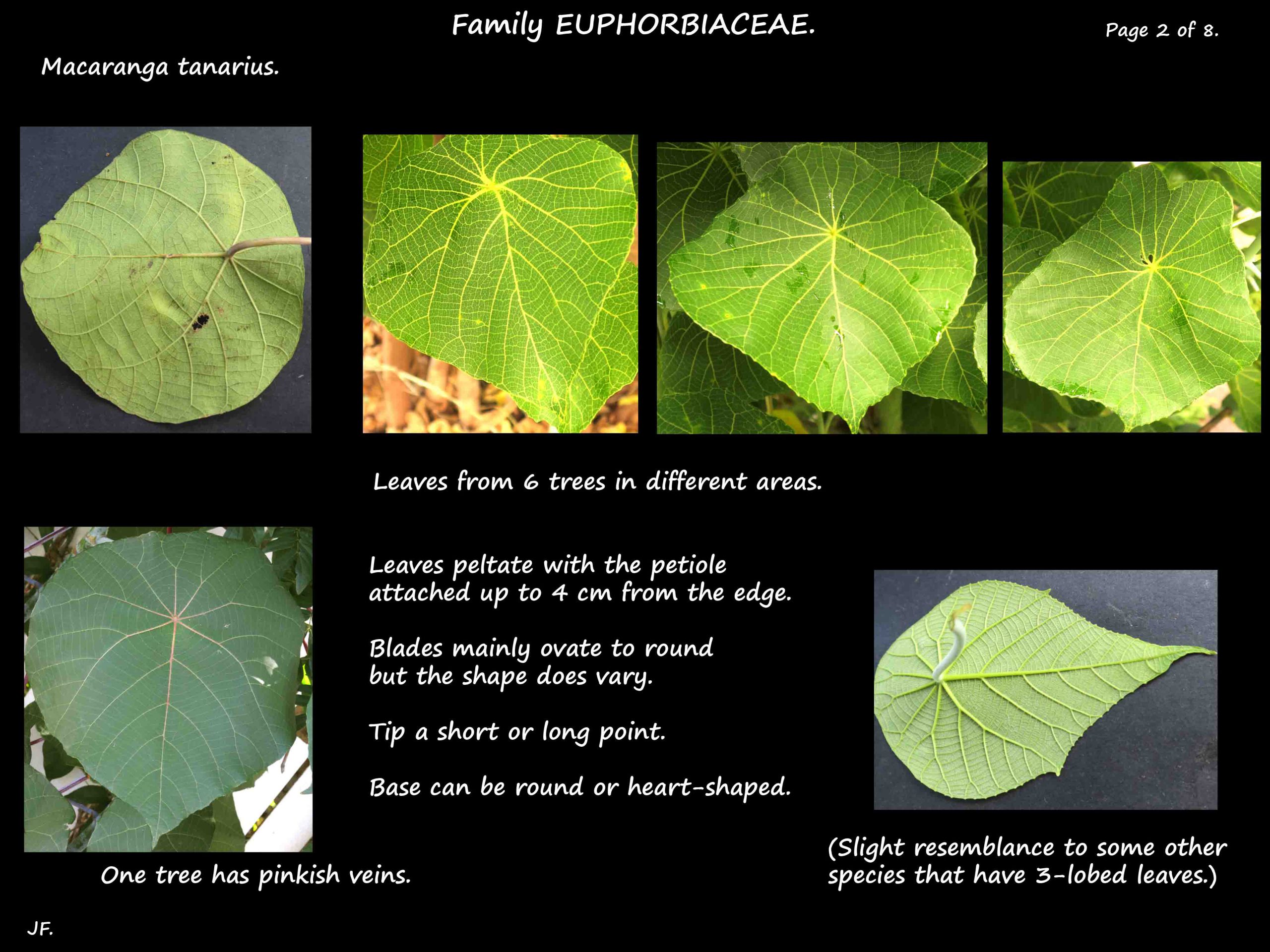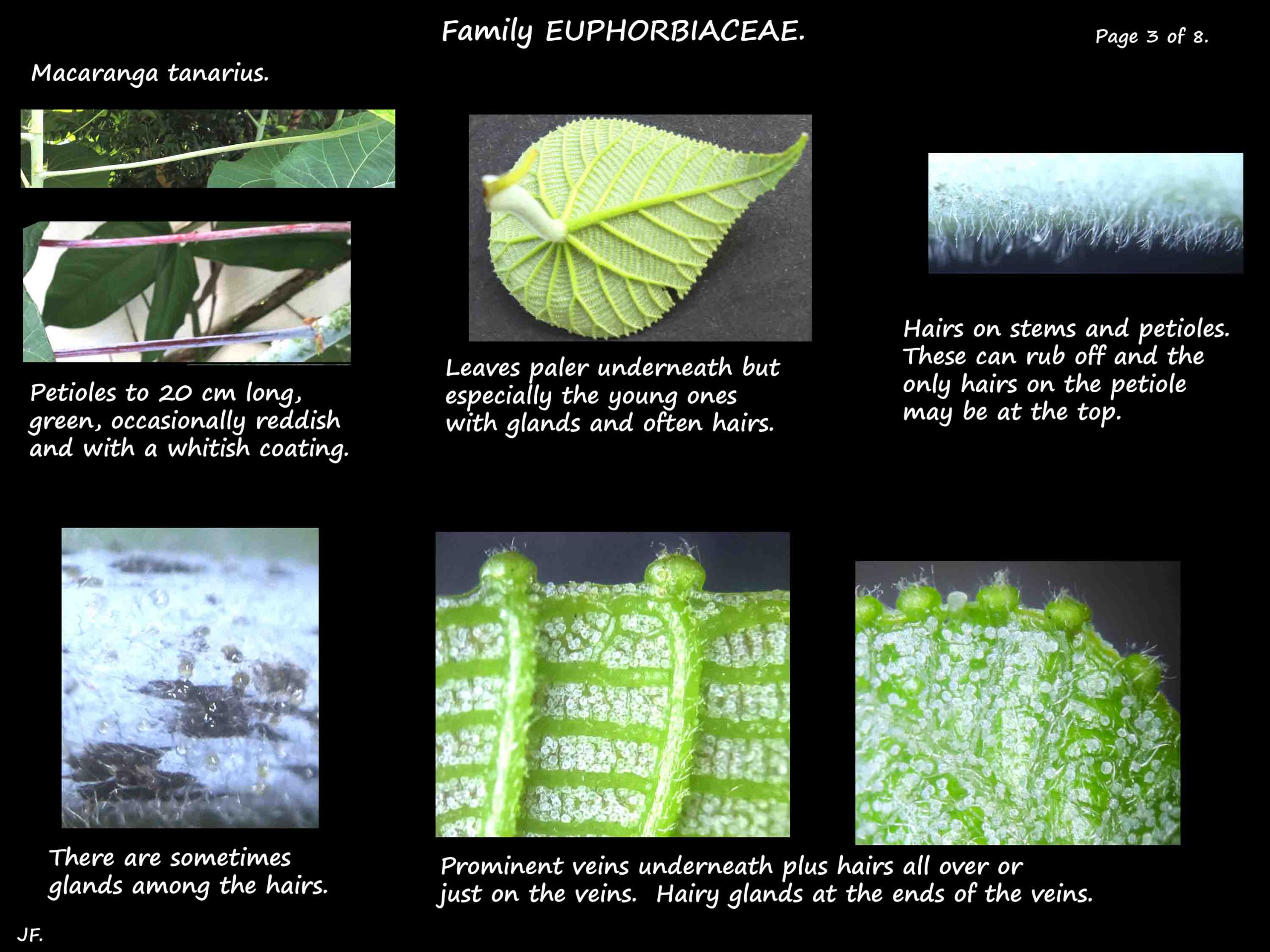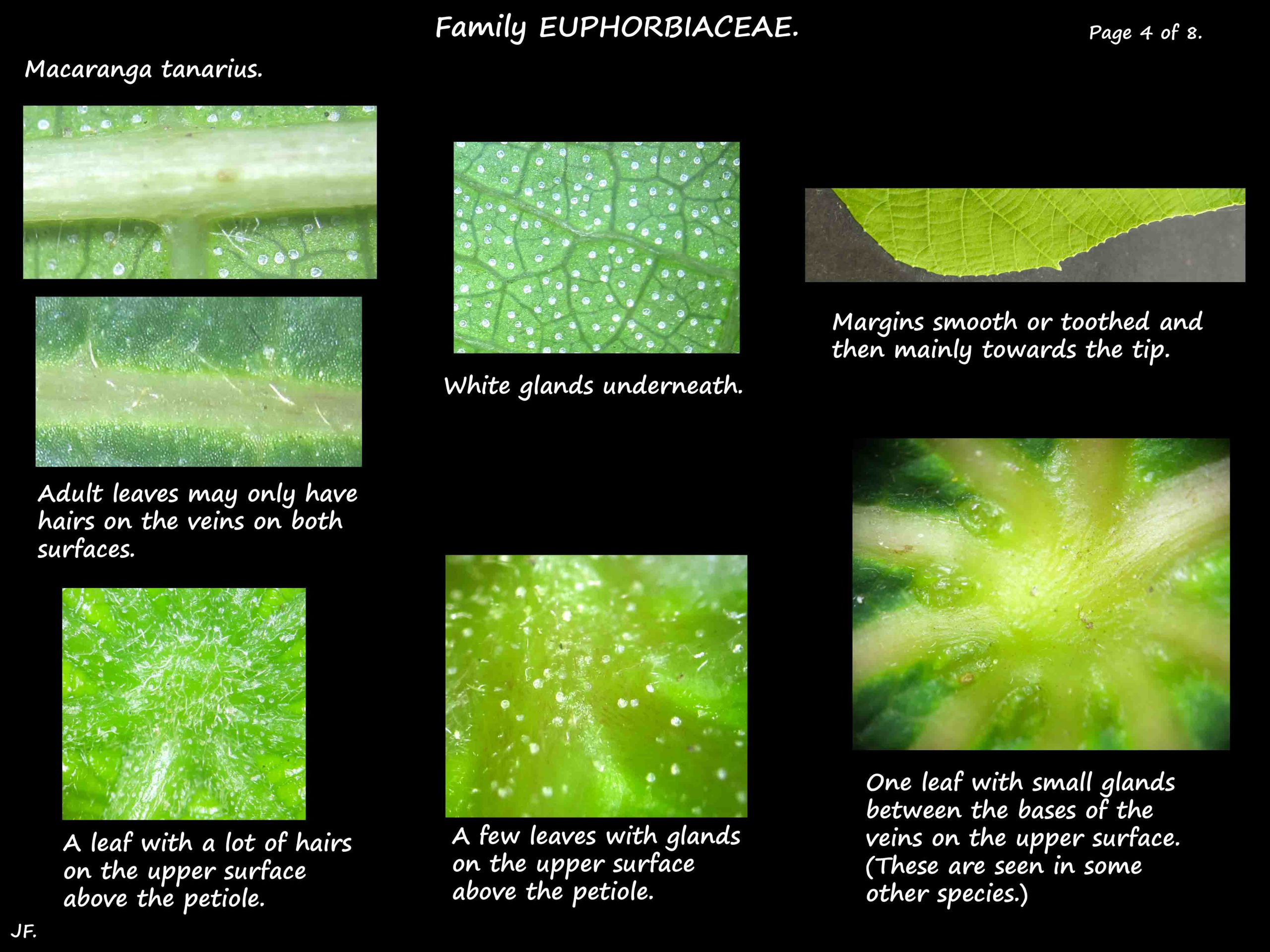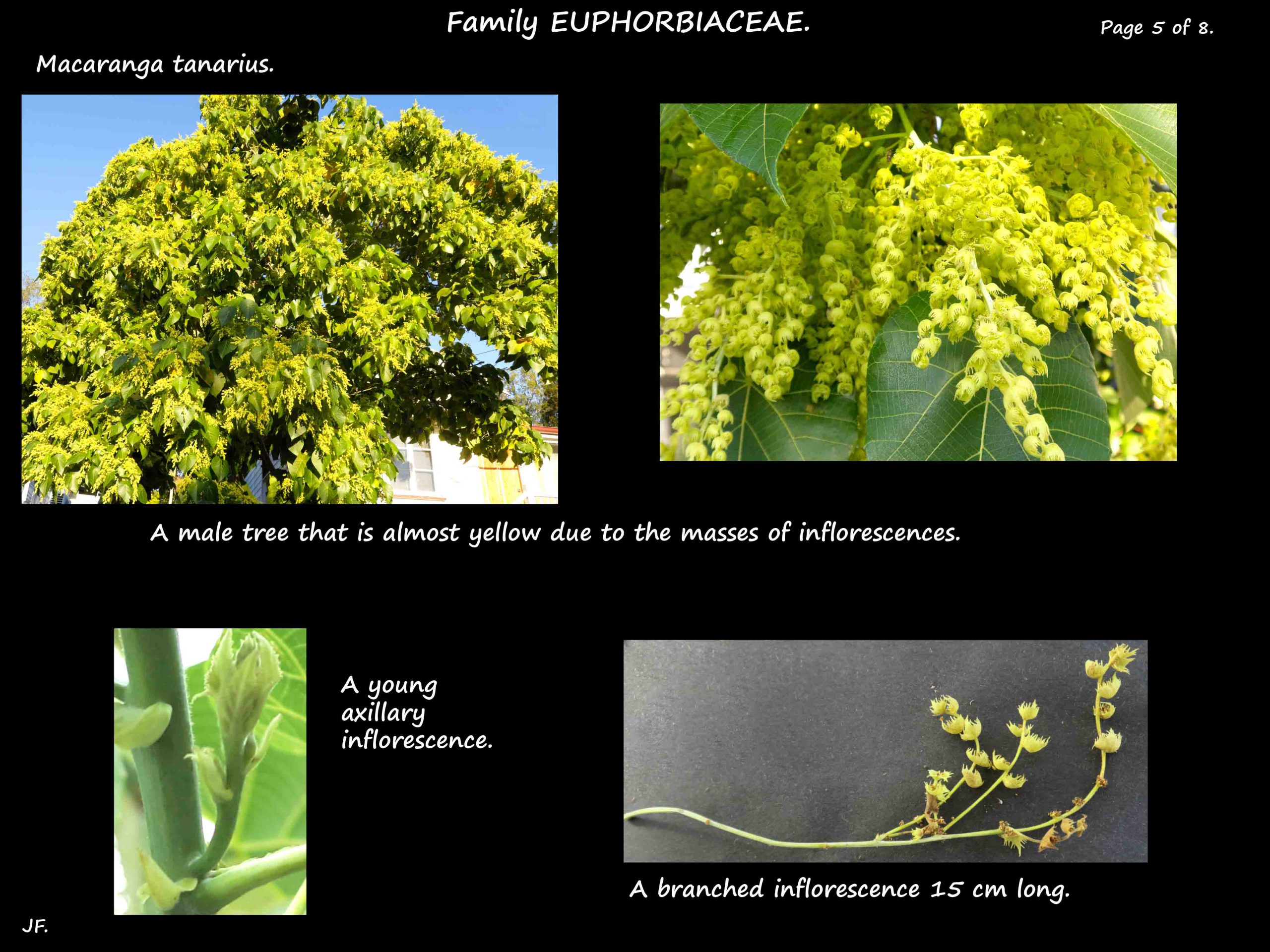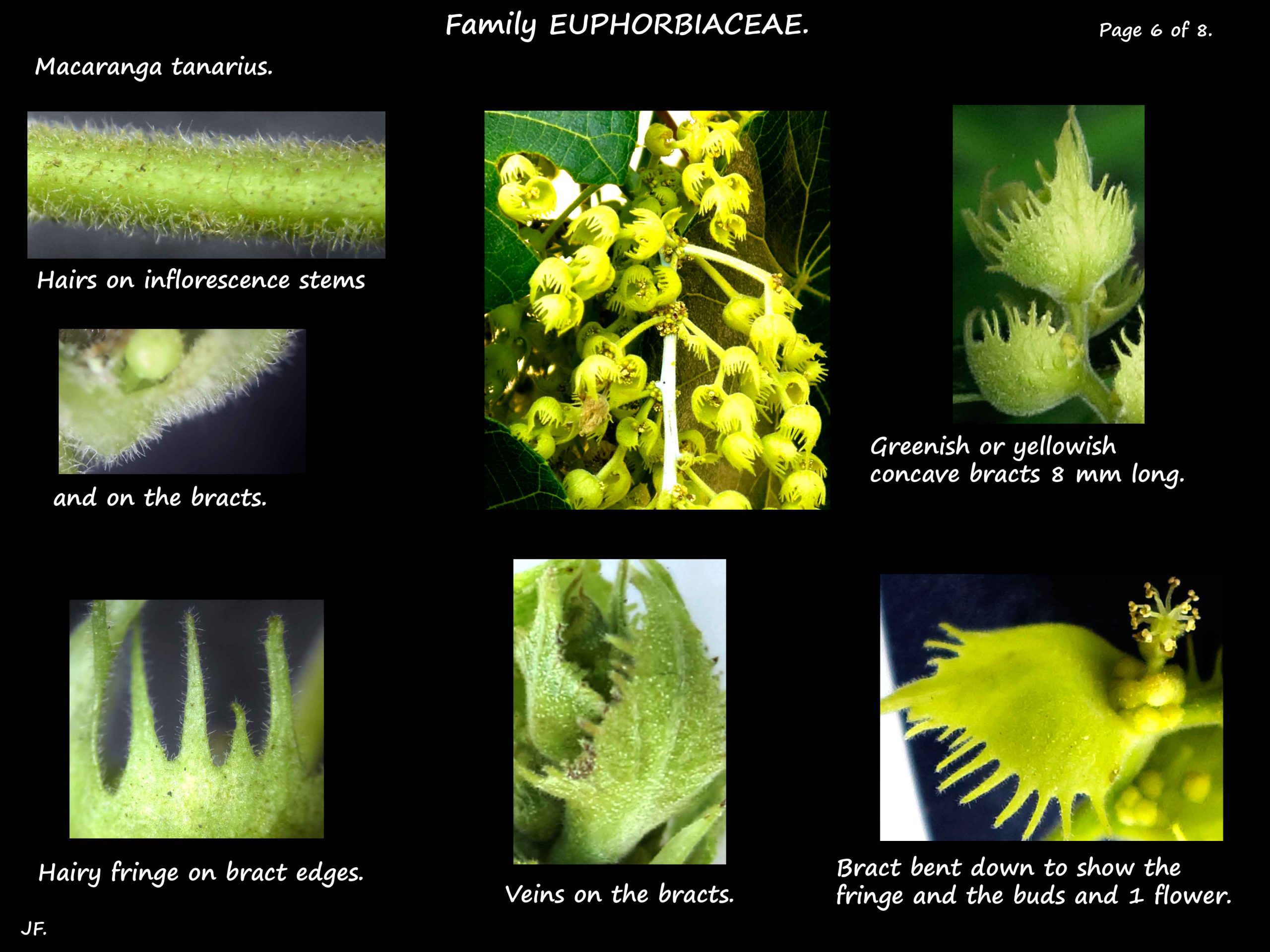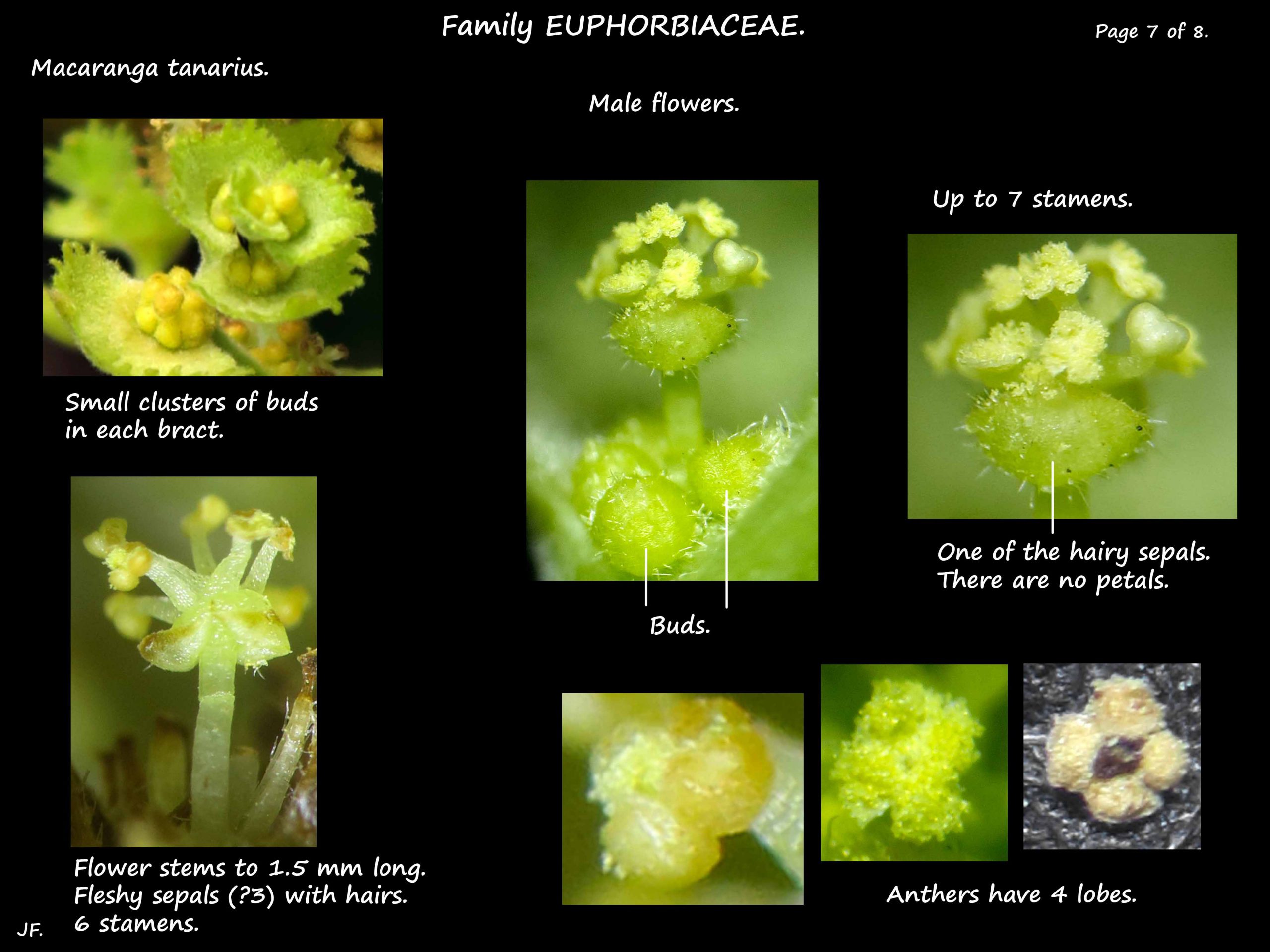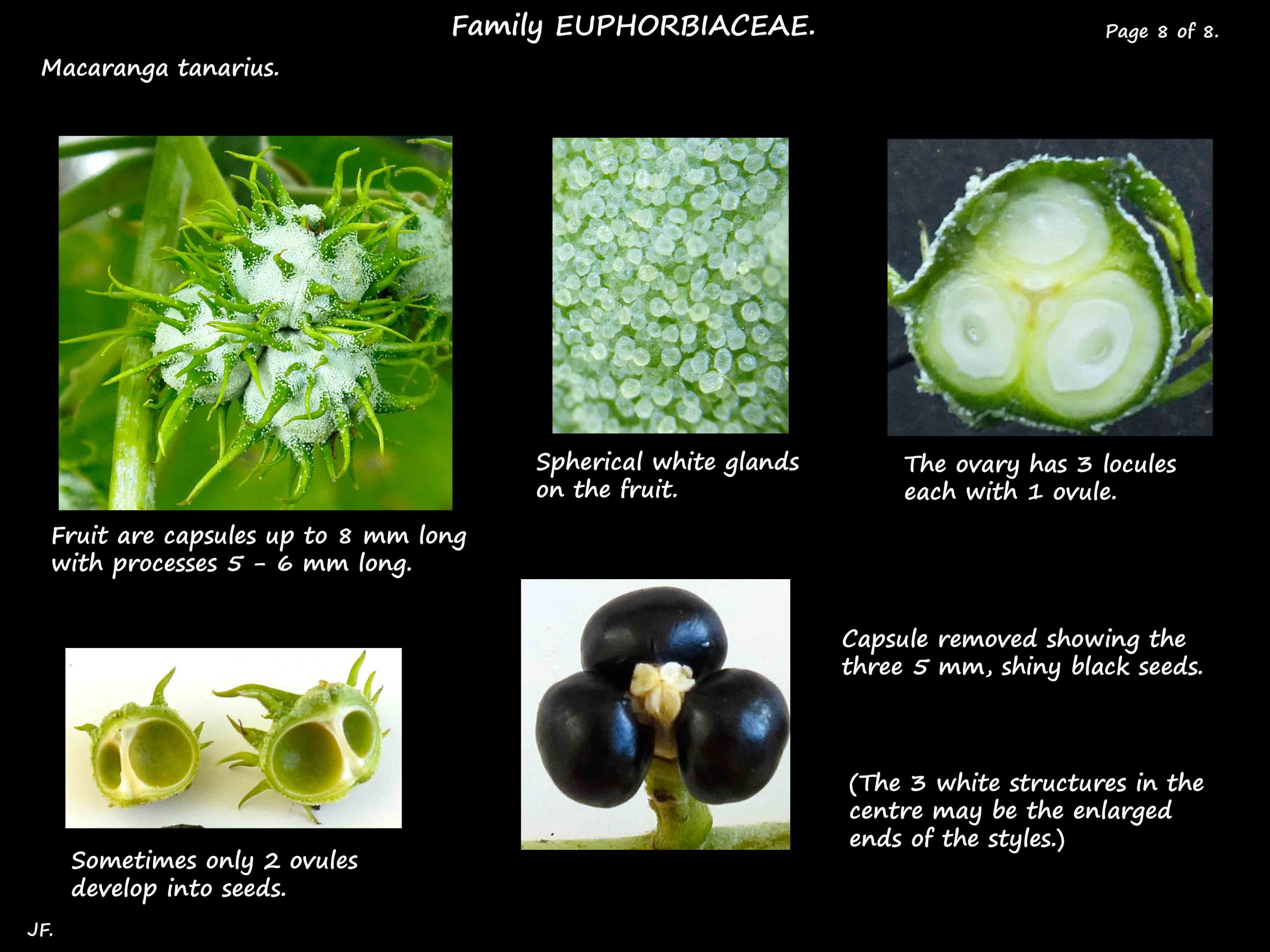Macaranga tanarius.
Family Euphorbiaceae.
There are about 250 to 280 species of Macaranga with the majority found in Asia and the West Pacific.
About 6 species occur in Australia including Macaranga tanarius in Queensland.
With their large leaves they are known as Parasol, Nasturtium or Heart leaf trees.
M. tanarius comes in 2 varieties differing mainly in the presence or absence of hairs.
M. tanarius var. tanarius is mainly hair free but can have some small fine ones on the leaves.
M. tanarius var. tomentosa specimens vary as some of the hairs may rub off.
The hairy variety are much more common.
The following description does not specifically separate the two.
Thick, bushy shrubs or small trees up to 6 m high but can grow to 12 m.
The short trunk has grey-brown bark with darker raised areas.
Young branches, smooth or hairy, are bluish-grey.
The alternately arranged leaves are in a spiral.
There are ovate or elliptic stipules 8 to 15 mm long and 8 mm wide.
The petioles, up to 20 cm long, attach a few cms inside the edge of the blade (peltate).
There may be hairs all over or just at the top of the petiole.
There are stipules about 12 mm long at the petiole bases.
The ovate to circular blades are up to 20 to 25 cm wide and long.
The tips can have long or short points and the bases are rounded to heart-shaped.
The margins are smooth or slightly toothed towards the tip and the lower surface is paler.
The young leaves can be smooth or hairy.
The hairs may disappear except on the under surface at the base of the nerves.
There may be glands among the hairs.
The leaves have 9 prominent veins radiating out from where the petiole attaches.
The trees are either male or female.
Flowers, without petals, are whitish to cream or yellow-green.
Axillary male inflorescences are up to 15 cm long and hold clusters of flowers.
Each cluster can have 5 or 6 (12) flowers.
At the base of each cluster is a concave, yellowish bract.
Its size varies from 2 mm up to 12 mm and it hides the flowers in that cluster.
The edge is fringed, at least towards the tip and there may be prominent veins.
Both surfaces may be smooth to finely hairy.
The male flowers, on stalks to 1.5 mm long, have free sepals also 0.5 to 1 mm long.
There are 6 or 7 stamens with anthers that have 4 lobes.
There are no rudimentary carpels.
The female flowers, with bracts, are in less, or unbranched clusters.
The sepals are tiny and may be hairy.
There are 3 locules in the ovary each with a single ovule.
Each carpel has a short style, around 5 mm long, and a stigma with tiny papillae.
The fruit are roundish, green to yellow capsules.
They are covered with white glands and have tentacle-like processes.
Each chamber has 1 round, black seed.
(Specific details on the flowers, especially the female ones, is very hard to find.
In some species the female inflorescences are a single, axillary flower.
Flowers are only a few mms in size.
J.F.
